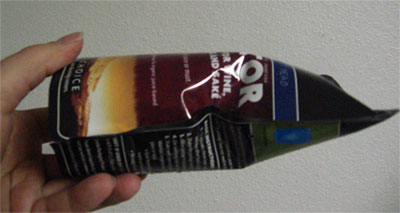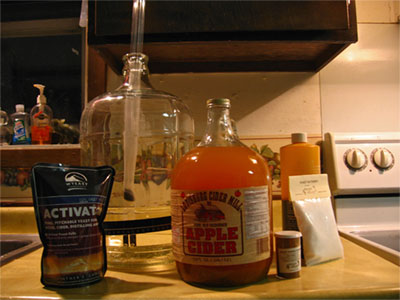I'm still a National Rank BJCP judge. I've stayed moderately active in judging, lest you think my geek factor is really fading here.

About four years ago, the Artist Formerly Known as Frau Lobster and I tried to sell the house and build a new one. After walking away from one deal and signing a contract with another builder, we ultimately couldn't sell our house in time for the contingency and someone else moved into 'our house' with all our options and all that. So then we refinanced and hired a friend to fix some shit, and it was actually worse when he finished. Well, finished is a strong word: when he quit coming out and pretending he was going to finish.

Anyway, I had stored some of my brewing stuff at my Mom's (along with a bunch of other stuff) to make the house more spacious at our Realtor's suggestion, and then the driveway being wrecked and my fermentation fridge that let me ferment cool even in the summer crapped out and eventually I just hadn't gotten the shit out in a long damn time.

In the wake of the divorce, there was a lot of remedial housekeeping I needed to do before I could even consider brewing anyway, and I've been kinda busy with single fatherhood and working (until a month ago) and so on.
But it had been in my mind. Among the put aways is at least ten gallons of Louisburg Cider juice, my first choice in commercial juice to harden. I'd been thinking about getting this going, but I didn't want to spend a bunch of money at Bacchus & Barleycorn given my zero income.
Still, I thought, what would I need? A yeast culture? Maybe fresh siphon hose and a new racking cane? I still had iodophor, PBW, and what's this?
I found a gift certificate to Bacchus & Barleycorn from Christmas of 2002 in the homebrew gear closet.

So now there's no excuse. It wasn't enough to get the makings of a batch of beer, but for what I'd need to get some cider working, it was ample.
I used Wyeast's sweet mead yeast, one I've had good luck with in past ciders. The smack packets are bigger now, which is nice. They're trying to hit the larger market of homebrewers and winemakers who won't be bothered with a starter, so they label it as sufficient to pitch in 5 gallons once the packet has swollen up (three to six hours).

But in my extensive reading, every figure I've seen on pitching rates suggests that even the larger smack packs are ridiculously small. You want the culture you're pitching to take off before competing wild yeasts (or worse, bacteria) can get a foothold. You also don't want to stress the yeast, and a large, working culture means fewer funky byproducts of yeast metabolism in the glass. Some of these byproducts can be pretty obnoxious.

So I made a gallon starter, with a teaspoon of yeast nutrient and hit it with bottled oxygen (a stone on the end diffuses the 02, you give it 30 seconds, agitate for 20 minutes, hit it for 30 seconds again).

Tomorrow I'll pitch this into probably ten gallons. I've had good luck with half gallon starters for a five gallon batch, so that should be about right. And I've got some honey left from my beekeeping days to make a mead with later in the week. The lees of a batch of cider is the perfect starter for a mead: it amounts to a five gallon starter, and given the challenge of fermenting honey, a monster culture is the way to go.

In the process, I also found I had five gallons of cider I'd forgotten about. This is from late 2001, I believe. My friend Leo lived in Minnesota at the time, and his homebrew club did a field pressing in an orchard in the fall. He brought me five gallons of juice that was already going from spontaneous fermentation. This is the great unknown, where you just let the yeast and bacteria on the apples do the work like they would have in the days before Pasteur. Or the days after in a lot of places. But it's unpredictable: you could get great cider, you could get passable vinegar. It could be perfectly balanced, it could be battery acid sour.
In this case, I believe it's heavily oxidized. This is because when I tucked this carboy away four plus years ago and forgot it, the airlock went dry. The cider was well topped up, but I'm skeptical. Even sealed in a keg in the beer fridge, it would be heavily oxidized by now. It smells cidery, though, and I put a fresh airlock on it. I'm thinking tomorrow I'll keg it up and see what it's like once it's chilled and sparkling.
Oh, I did go to the liquor store. I needed airlock vodka. Some homebrewers use water, but I've never trusted that. If the barometric pressure shoots up, the airlock's contents can get sucked into the carboy. So if you've got stagnant water in the airlock, you're sucking anything that's growing in that water in. For $4, a pint of rot-gut vodka will fix you up with airlock liquid for batches and batches. If it gets sucked into a five gallon batch, it's insignificant and neutral. And nothing, absolutely nothing, biological is going to happen in the stuff.

It was good, too, to get out my old brewing log. This will be, according to the log, batch #88. The number surprised me, I thought I had made over a hundred batches.
It's so good to be back in the saddle with this stuff. When I get an income under me, I'll have to make me a batch of beer. Or two. Or two hundred.


No comments:
Post a Comment